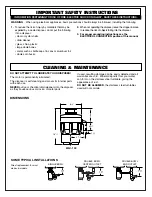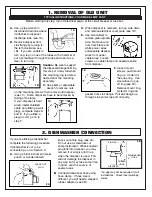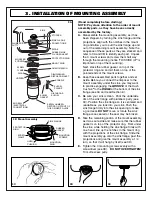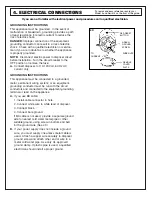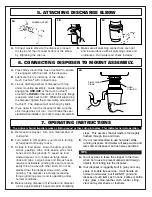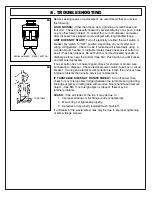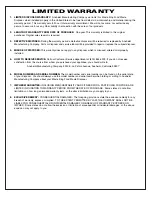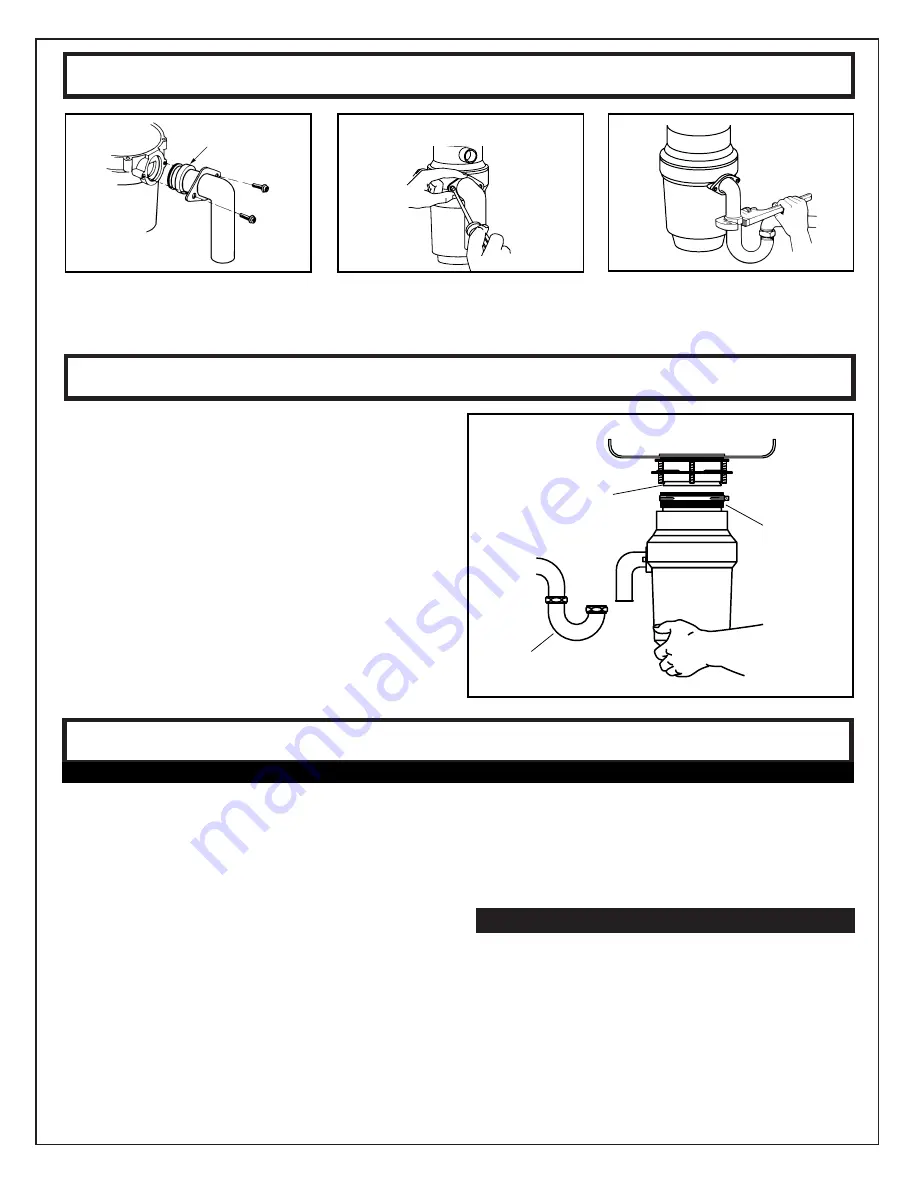
5. ATTACHING DISCHARGE ELBOW
A.
Connect waste elbow to the disposer, proceed
to step 6 and then connect bottom of the elbow
by tightening the slip nut.
B.
Make sure all plumbing connections are tight
and in accordance with all plumbing codes and
ordinances. Run water and check for leaks.
6. CONNECTING DISPOSER TO MOUNT ASSEMBLY.
7. OPERATING INSTRUCTIONS
A.
Press firmly around the Hush Cushion
®
to ensure
it is engaged with the neck of the disposer.
B.
Lubricate the top inside lip of the rubber
Hush Cushion
®
with a liquid soap.
C.
Line up discharge elbow of disposer with trap
under mounting assembly. Guide disposer up and
engage the
GROOVE
of the Hush Cushion
®
around the
RIDGE
at the bottom of the sink flange
(see 6A & refer back to 3B). While still supporting
the disposer, tighten the screw-clamp around Hush
Cushion
®
. The disposer will now hang by itself.
D.
If you need to turn the disposer make sure the
sink flange does not turn. It will break the seal
created when installed. Go back to steps 5A and 5B.
A.
Remove sink stopper. Turn on a medium flow of
cold water.
B.
Turn switch to ON position; your motor is turning
at full speed and ready to use.
C.
Scrape in food waste. Down the drain go table
scraps, peelings, cobs, rinds, seeds, pits, small
bones and coffee grounds. To speed up food
waste disposal, cut or break up large bones,
rinds and cobs. Large bones and fibrous husks
require considerable grinding time and are more
easily thrown away with other trash. Do not be
alarmed that the disposer slows down while
grinding. The disposer is actually increasing
torque (grinding power) and is operating under
normal conditions.
D.
Before turning disposer off, let water and disposer
run for approximately 15 seconds after shredding
RUBBER GASKET
The Anti-Jam Swivel Impellers make a clicking sound as they swing into place. This indicates normal operation.
stops. This assures that all waste is thoroughly
flushed through trap and drain.
E.
It is not recommended to use hot water while
running disposer. Cold water will keep waste and
fats solid so disposer can flush away particles.
TIPS
A.
You may want to leave the stopper in the drain
when not in use to prevent utensils and foreign
objects from falling into the disposer.
B.
Your disposer is ruggedly built to give you many
years of trouble free service. It will handle all
normal food wastes, but it will NOT grind and
dispose of such items as tin cans, bottles or bottle
caps, glass, china, leather, cloth, rubber, string,
clam and oyster shells, or feathers.
6A
5A
5B
TRAP
SINK FLANGE
RIDGE
5C
HUSH
CUSHION


